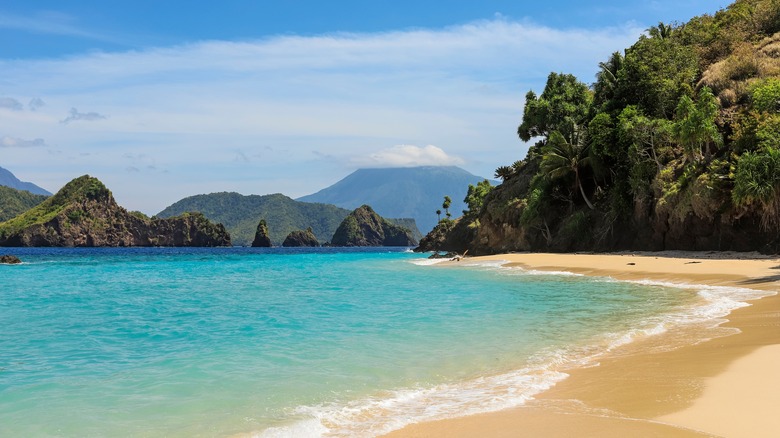You’ve probably heard of Bali and might be familiar with Yogyakarta’s ancient temples or Komodo National Park’s giant dragons. These are some of Indonesia’s most famous tourist attractions. But there are also a ton of underrated Indonesian islands offering outdoor adventures. Keen divers will likely know the country’s many prime spots for getting underneath the waves. Raja Ampat in far-flung West Papua and Lembeh in North Sulawesi are rightfully two of the most famous.
But if you want to swim away from it all and dive into one of the world’s prettiest and most tranquil areas, you’ll want to look north from Lembeh to the Sangihe Islands. This remote archipelago of volcanic islands stretches 160 miles north from the island of Sulawesi into the Celebes Sea. The Sangihe Islands are spectacular, with volcanoes towering over white-sand beaches lined by coconut palms. But what awaits below the crystalline waters makes the trip there truly worthwhile.
Diving in the Sangihe Islands

The Sangihe Islands have flown under the radar for many years despite being a premier diving location. Firstly, visibility in the water is up to 200 feet, which matches or exceeds some of the world’s best vacation destinations for clear water diving, like the Cayman Islands and French Polynesia. However, one of the best things about diving in Sangihe is the diversity you will encounter.
You can explore Banua Wuhu, a submerged active volcano whose peak almost reaches the surface and emits gassy bubbles into the water. Additionally, you can explore The Drowned Village, which was engulfed by a volcanic eruption in the 1960s. While underwater, you’ll see coral reefs in various colors teeming with marine life, from giant sea sponges and barracuda to pygmy seahorses and anemonefish. Bright parrotfish ply the tropical waters, and reef sharks stalk their prey. In the Sangihe archipelago, Ruang Island is particularly spectacular for diving, with black lava flowing into the sea and turning into a coral reef.
Tips for visiting Sangihe

There’s no escaping from the fact that Sangihe is remote, and it takes some effort to get there. However, this isolation has kept the crowds away, which is undoubtedly part of the archipelago’s appeal. The main islands are Sangihe, Siau, Tahulandang, and Biaro. You can reach any of these main islands, like Manado on Sulawesi, by ferry and hop between islands by boat.
However, while you can explore the region independently, a tour on a liveaboard will allow you to truly make the most of your time diving in the Sangihe Islands. You’ll get to spend several nights onboard a dive boat, moving between some of the best sites in the area. The Sangihe Islands are also a great beach vacation destination; if you want to sunbathe on dry land, guesthouses are available on all the main islands. As for when to visit the Sangihe Islands, the best conditions are during the dry season, from March to October. From July onward, the wind can pick up in the area, reducing visibility, so go earlier in the year if you can.

